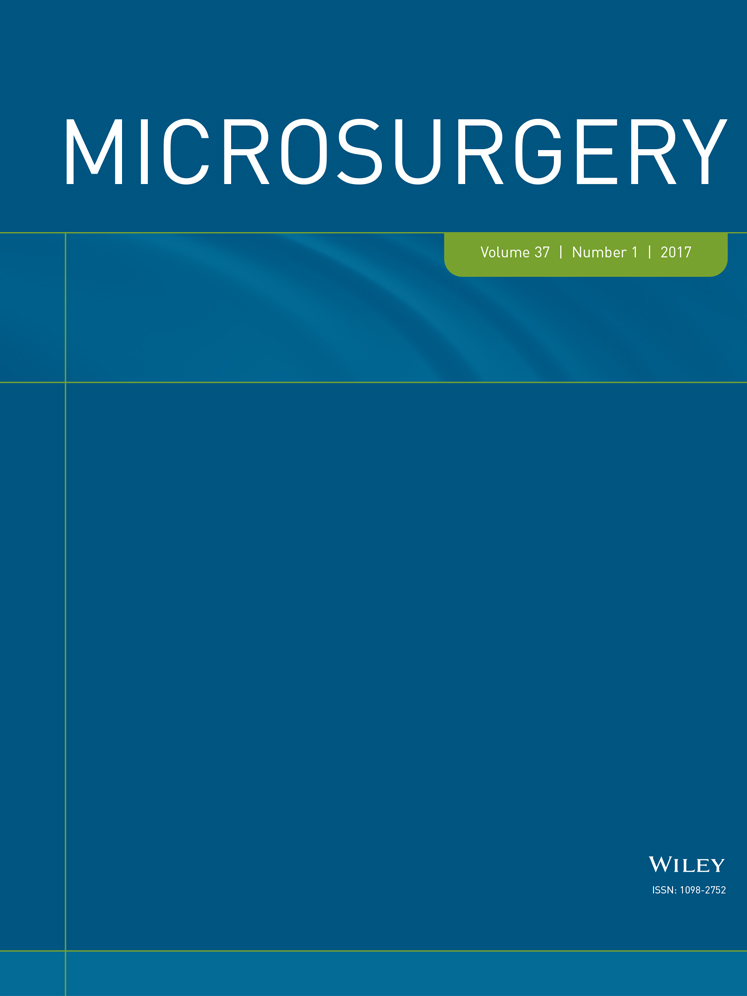Complex abdominal wall defect reconstruction using a latissimus dorsi free flap with mesh after malignant tumor resection
Abstract
Purpose
Extended and full-thickness abdominal wall defects are commonly reconstructed using free flaps. Published surgical outcomes involving the latissimus dorsi (LD) free flap procedure are limited and are less numerous than those with free flaps involving the thigh. The aim of this report was to describe the immediate and long-term evaluation of complex abdominal wall reconstruction using a LD free flap with mesh.
Patients and Methods
Between 2005 and 2013, nine patients with extended malignant tumors of the abdominal wall underwent surgeries. After the surgical resection, the mean defect size was 385 cm2 (range: 190–650 cm2). Full-thickness abdominal wall reconstruction was performed with a combination of LD free flaps and meshes. The immediate and long-term outcomes were assessed regarding the complications, sustainable strength of the abdominal wall and cancer recurrence.
Results
The meshes measured 927 cm2 in average (range: 500–1036 cm2). Eight Parietex Composite® and 1 Bard Collamend Implant® were used. No donor site complications occurred, and complete LD flap survival was achieved without partial necrosis or thrombosis. One obese patient who received a porcine dermis mesh developed an eventration four days postoperatively and exhibited a limited amount of abdominal skin necrosis around the flap. Two patients died from cancer evolution. After a mean follow-up of 60.4 months (range: 29–94 months), clinical evaluation of the abdomen revealed 2 patients without anomalies, 4 cases of abdominal bulging without functional discomfort and 1 case of major abdominal distension.
Conclusions
Complex abdominal reconstruction with LD free flap and mesh allows extended satisfactory coverage with a low incidence of flap and donor site complications. However, patients should be advised of the significant risk of abdominal bulging. © 2014 Wiley Periodicals, Inc. Microsurgery 37:38–43, 2017.




